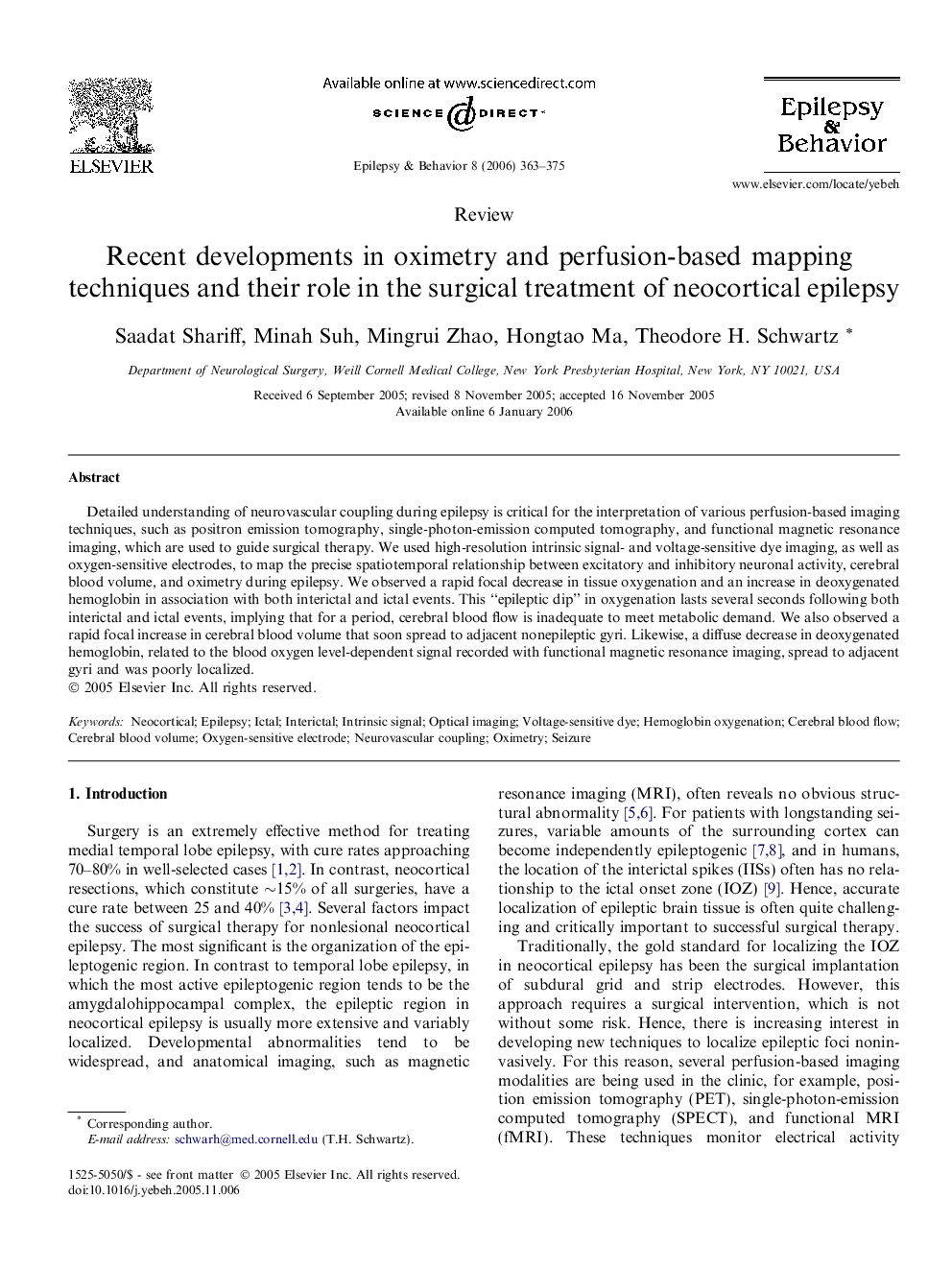| Article ID | Journal | Published Year | Pages | File Type |
|---|---|---|---|---|
| 3051566 | Epilepsy & Behavior | 2006 | 13 Pages |
Abstract
Detailed understanding of neurovascular coupling during epilepsy is critical for the interpretation of various perfusion-based imaging techniques, such as positron emission tomography, single-photon-emission computed tomography, and functional magnetic resonance imaging, which are used to guide surgical therapy. We used high-resolution intrinsic signal- and voltage-sensitive dye imaging, as well as oxygen-sensitive electrodes, to map the precise spatiotemporal relationship between excitatory and inhibitory neuronal activity, cerebral blood volume, and oximetry during epilepsy. We observed a rapid focal decrease in tissue oxygenation and an increase in deoxygenated hemoglobin in association with both interictal and ictal events. This “epileptic dip” in oxygenation lasts several seconds following both interictal and ictal events, implying that for a period, cerebral blood flow is inadequate to meet metabolic demand. We also observed a rapid focal increase in cerebral blood volume that soon spread to adjacent nonepileptic gyri. Likewise, a diffuse decrease in deoxygenated hemoglobin, related to the blood oxygen level-dependent signal recorded with functional magnetic resonance imaging, spread to adjacent gyri and was poorly localized.
Keywords
Related Topics
Life Sciences
Neuroscience
Behavioral Neuroscience
Authors
Saadat Shariff, Minah Suh, Mingrui Zhao, Hongtao Ma, Theodore H. Schwartz,
